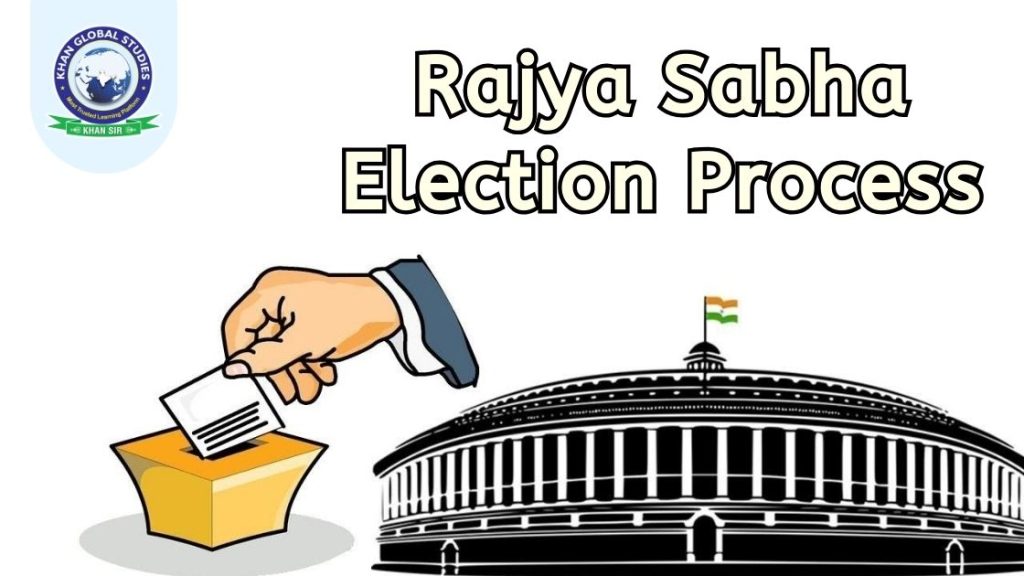The upper house of the Parliament of India, the Rajya Sabha, plays an important role in representing the voice of the states and union territories. Here are details of its unique structure and election process.
The directly elected House was considered by the Constituent Assembly to be inadequate to meet the challenges facing independent India. Therefore, a second House, known as the ‘Council of States’, was created with a completely different structure and method of election than the directly elected House of the People. This meant a federal House i.e. a House elected by elected members of the legislatures of the states and two union territories with no equal representation given to the states (unlike many other federal countries). Apart from the elected members, provision was also made for the nomination of twelve members to the House by the President.
Why a particular house?
The Founders of India realized that a directly elected House would not adequately address the challenges of a diverse nation. Therefore, he created the Rajya Sabha separate from the Lok Sabha (“House of the People”).
Key Features
- Federal Representation: Members are indirectly elected by state legislators and union territory electoral colleges, ensuring that state concerns are heard.
- Unequal Representation: Unlike many federations, states do not get an equal number of seats. It is based on population, favouring larger states.
- Nominated Members: The President appoints 12 individuals with expertise in fields such as science, arts and social services.
- Systematic Elections: One-third of the members are elected every two years, ensuring continuity and experience.
Composition of Rajya Sabha
Article 80 of the Constitution sets the maximum strength of the Rajya Sabha at 250, of which 12 members are nominated by the President and 238 members are representatives of the States and two Union Territories. However, the current membership of the Rajya Sabha is 245, of which 233 are representatives of the States and Union Territories of Delhi and Puducherry and 12 are nominated by the President. Members nominated by the President are persons having special knowledge or practical experience concerning matters such as literature, science, art and social service.
Seat Allocation for Rajya Sabha
The 4th Schedule of the Constitution of India provides for the allocation of seats in the Rajya Sabha to the States and Union Territories. Seats are allocated based on the population of each state. As a result of the reorganization of states and the formation of new states, the number of elected seats in the Rajya Sabha allocated to states and union territories has changed from time to time since 1952.
| State Name | No. of Seats |
| Andhra Pradesh | 18 |
| Arunachal Pradesh | 1 |
| Assam | 7 |
| Bihar | 16 |
| Chhattisgarh | 5 |
| Goa | 1 |
| Gujarat | 11 |
| Haryana | 5 |
| Himachal Pradesh | 3 |
| Jammu & Kashmir | 4 |
| Jharkhand | 6 |
| Karnataka | 12 |
| Kerala | 9 |
| Madhya Pradesh | 11 |
| Maharashtra | 19 |
| Manipur | 1 |
| Meghalaya | 1 |
| Mizoram | 1 |
| Nagaland | 1 |
| National Capital Territory (Delhi) | 3 |
| Nominated | 12 |
| Odisha | 10 |
| Pondicherry | 1 |
| Punjab | 7 |
| Rajasthan | 10 |
| Sikkim | 1 |
| Tamil Nadu | 18 |
| Tripura | 1 |
| Uttar Pradesh | 31 |
| Uttarakhand | 3 |
| West Bengal | 16 |
Rajya Sabha Election Process
- Indirect Voting: Unlike the Lok Sabha, elections are not direct. State MLAs and Union Territory representatives cast their votes.
- Proportional Representation: The single transferable vote (STV) system ensures that even smaller parties can win based on voter preferences.
- Quota: A specific number of votes (quota) are required to win a seat. This formula considers the total number of votes and seats.
Example:
Imagine a state with 3 Rajya Sabha seats and two parties: Party A (100 seats) and Party B (40 seats). To win, a candidate needs 36 votes (formula: 140 votes / 4 seats + 1).
- Both parties can field three candidates each.
- Using STV, voters rank their preferences (first, second, third…).
- If 36 or more voters choose a candidate as their first choice, they win.
- This allows Party B to potentially win a seat despite being in the minority, ensuring that diverse voices can be heard.
Debate and Correction
The unique structure of the Rajya Sabha raises debate regarding equal representation and the role of nominated members. Nevertheless, it plays an important role in balancing national interests with state concerns and contributing to a strong democratic system.
Conclusion
The Rajya Sabha plays a crucial role in India’s democracy, but its electoral system raises concerns. Ongoing debates focus on finding a balance between state representation, diverse voices, and national good while tackling issues like equal representation and electoral malpractices.



